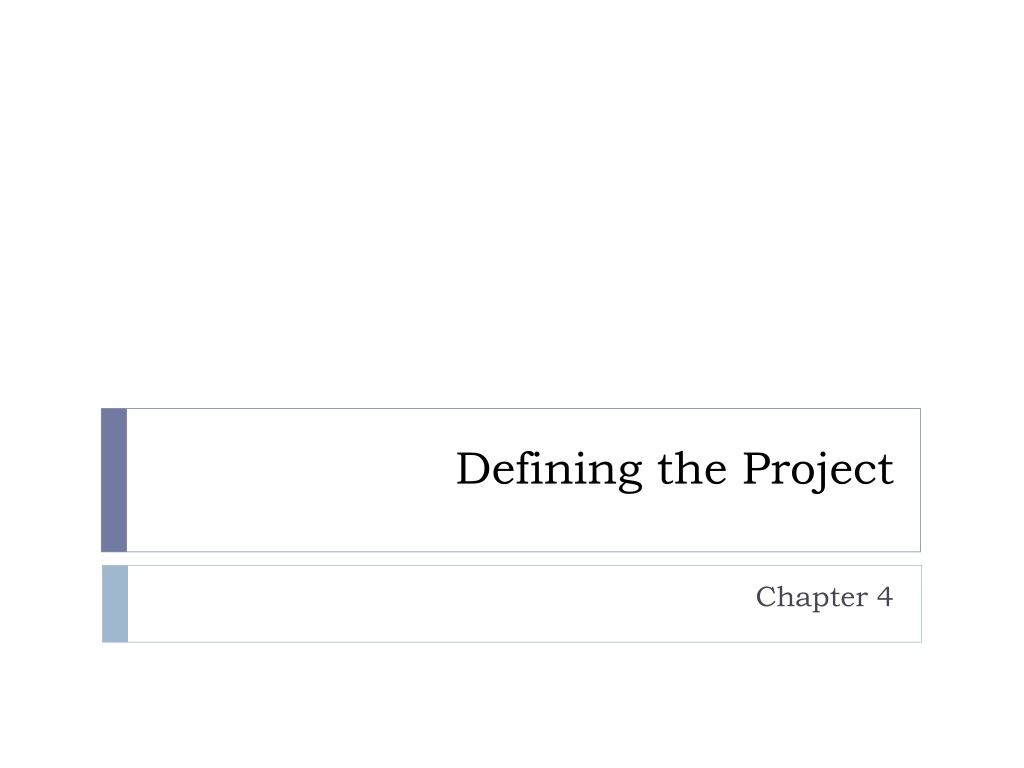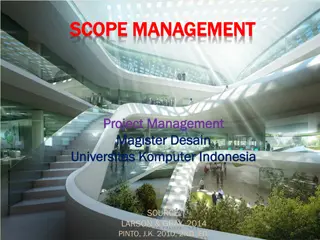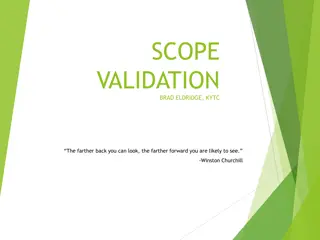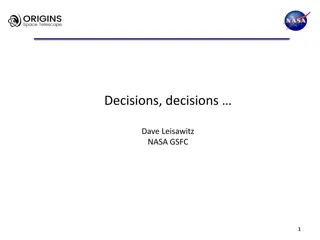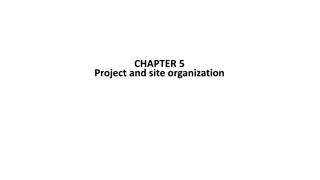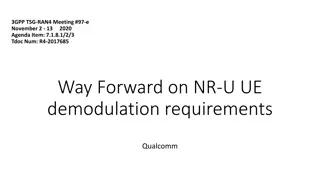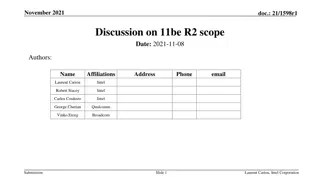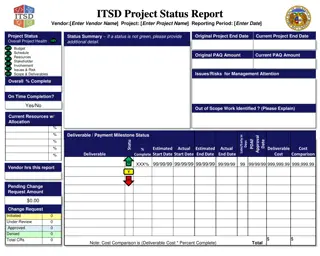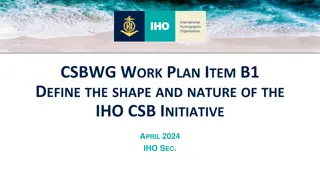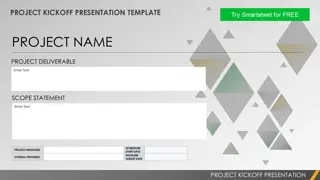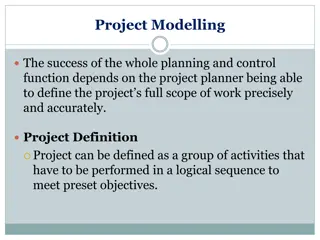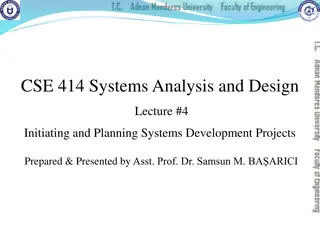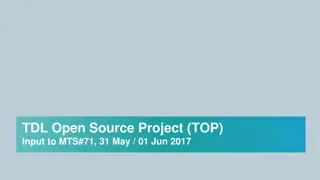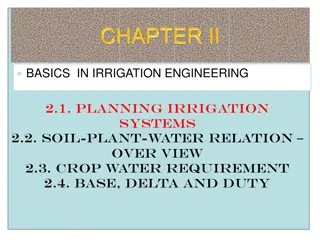Defining the Project: Scope, Priorities, and Structure
This chapter focuses on the critical steps involved in defining a project, including establishing project scope, priorities, and creating a work breakdown structure. It covers the importance of clear scope definition, managing project trade-offs, and structuring project tasks effectively. Additionally, it highlights key terms and concepts related to project scope management.
Download Presentation

Please find below an Image/Link to download the presentation.
The content on the website is provided AS IS for your information and personal use only. It may not be sold, licensed, or shared on other websites without obtaining consent from the author. Download presentation by click this link. If you encounter any issues during the download, it is possible that the publisher has removed the file from their server.
E N D
Presentation Transcript
Defining the Project Chapter 4
Defining the Project Step 1: Defining the Project Scope Step 2: Establishing Project Priorities Step 3: Creating the Work Breakdown Structure Step 4: Integrating the WBS with the Organization Step 5: Coding the WBS for the Information System
Step 1: Defining the Project Scope Project Scope A definition of the end result or mission of the project a product or service for the client/customer in specific, tangible, and measurable terms. Purpose of the Scope Statement To clearly define the deliverable(s) for the end user. To focus the project on successful completion of its goals. To be used by the project owner and participants as a planning tool and for measuring project success.
Project Scope Checklist 1. Project objective 2. Deliverables 3. Milestones 4. Technical requirements 5. Limits and exclusions 6. Reviews with customer
Project Scope: Terms and Definitions Scope Statements Also called statements of work (SOW) Project Charter Can contain an expanded version of scope statement A document authorizing the project manager to initiate and lead the project. Scope Creep The tendency for the project scope to expand over time due to changing requirements, specifications, and priorities.
Step 2: Establishing Project Priorities Causes of Project Trade-offs Shifts in the relative importance of criterions related to cost, time, and performance parameters Budget Cost Schedule Time Performance Scope Managing the Priorities of Project Trade-offs Constrain: a parameter is a fixed requirement. Enhance: optimizing a parameter over others. Accept: reducing (or not meeting) a parameter requirement.
Project Management Trade-offs FIGURE 4.1
Project Priority Matrix FIGURE 4.2
Step 3: Creating the Work Breakdown Structure Work Breakdown Structure (WBS) An hierarchical outline (map) that identifies the products and work elements involved in a project Defines the relationship of the final deliverable (the project) to its subdeliverables, and in turn, their relationships to work packages Best suited for design and build projects that have tangible outcomes rather than process-oriented projects
Hierarchical Breakdown of the WBS FIGURE 4.3
How WBS Helps the Project Manager WBS Facilitates evaluation of cost, time, and technical performance of the organization on a project Provides management with information appropriate to each organizational level Helps in the development of the organization breakdown structure (OBS), which assigns project responsibilities to organizational units and individuals Helps manage plan, schedule, and budget Defines communication channels and assists in coordinating the various project elements
Work Breakdown Structure FIGURE 4.4
Work Packages A Work Package Is the Lowest Level of the WBS. It is output-oriented in that it: Defines work (what) Identifies time to complete a work package (how long) Identifies a time-phased budget to complete a work package (cost) Identifies resources needed to complete a work package (how much) Identifies a single person responsible for units of work (who)
Step 4: Integrating the WBS with the Organization Organizational Breakdown Structure (OBS) Depicts how the firm is organized to discharge its work responsibility for a project Provides a framework to summarize organization work unit performance Identifies organization units responsible for work packages Ties the organizational units to cost control accounts
Integration of WBS and OBS FIGURE 4.5
Step 5: Coding the WBS for the Information System WBS Coding System Defines: Levels and elements of the WBS Organization elements Work packages Budget and cost information Allows reports to be consolidated at any level in the organization structure
Process Breakdown Structure Process-Oriented Projects Are driven by performance requirements in which the final outcome is the product of a series of steps of phases in which one phase affects the next phase Process Breakdown Structure (PBS) Defines deliverables as outputs required to move to the next phase Checklists for managing PBS: Deliverables needed to exit one phase and begin the next Quality checkpoints for complete and accurate deliverables Sign-offs by responsible stakeholders to monitor progress
PBS for Software Project Development FIGURE 4.8
Responsibility Matrices Responsibility Matrix (RM) Also called a linear responsibility chart Summarizes the tasks to be accomplished and who is responsible for what on the project Lists project activities and participants Clarifies critical interfaces between units and individuals that need coordination Provide an means for all participants to view their responsibilities and agree on their assignments Clarifies the extent or type of authority that can be exercised by each participant
Responsibility Matrix for a Market Research Project FIGURE 4.9
Responsibility Matrix for the Conveyor Belt Project FIGURE 4.10
Project Communication Plan What information needs to be collected? Who will receive information? What information methods will be used? What are the access restrictions? When will information be communicated? How will information be communicated?
Key Terms Cost account Milestone Organization breakdown structure (OBS) Scope creep Priority matrix Responsibility matrix Scope statement Process breakdown structure (PBS) Work breakdown structure (WBS) Work package
